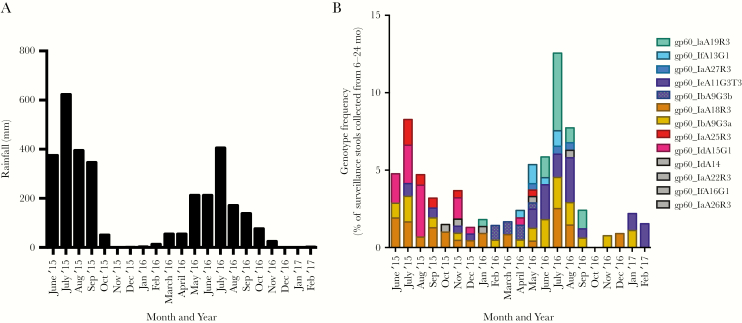Figure 1.
The frequency of Cryptosporidium hominis infections was dependent on both the time of year and the parasite genotype. Infants <6 months are infrequently infected with Cryptosporidium and in our study cohort none were infected. The risk of experiencing a Cryptosporidium infection increases thereafter. The graphs therefore, start at the beginning of the second study monsoon (2015) when Cryptosporidium infections began to be observed in the Mirpur cohort who were >6 months of age. The x-axis in both graphs indicates the month and year. A, Rainfall in the Dhaka area. The y-axis indicates total monthly rainfall (mm). B, The number of surveillance stools collected from children 6–24 months in age was used as a surrogate marker for the number of children participating in the study who were susceptible to cryptosporidiosis. The y-axis indicates the percentage of children experiencing genotyped Cryptosporidium infections occurring during this time period (surveillance and diarrheal). Genotypes are indicated by color with the exception of genotypes which occurred with a frequency of <1% in that month’s samples, which are all colored gray. Only 2 genotypes (IaA18R3 and IbA9G3a) were common in both 2015 and 2016. The months March–June 2017 were omitted from the graph as <50 participants of the correct age range remained in the study.

